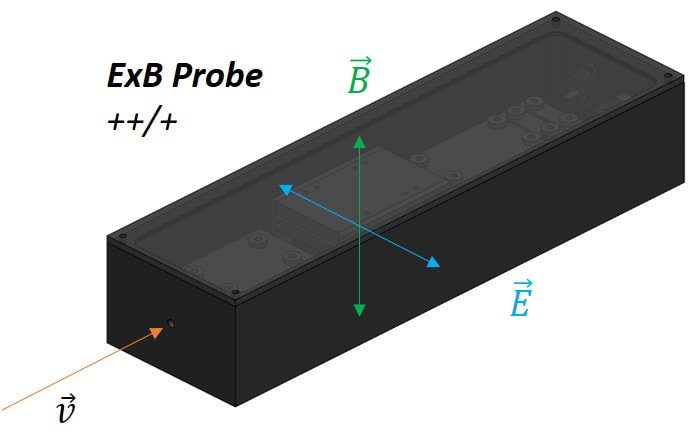ExB Probe
|
Theory of Operation
|
Ions enter the probe through a set of collimated apertures to limit the probe's field of view. The ions then enter a region that has both electric (E) and magnetic (B) fields, and experience forces according to the Lorentz equation F = q (E + v x B). For ions that have a particular velocity, the net force is zero, and those ions are able to pass through the crossed field region to a current detector.
Energy is related to velocity through E = 1/2 m v2, where kinetic energy often comes from changes in potential difference E = q ΔV. Particle velocity, then, is a function of charge-to-mass ratio. Sometimes, the signal from a singly-charged particle of one species will overlap with that of a doubly-charged particle of another species. |
Typical DataThe ion current reaching the analyzer's detector can be plotted as a function of electric field. Downstream of an ion source, which has a relatively narrow beam voltage, ions of different mass and charge can be distinguished.
The area under each signal can be integrated and compared to determine double-to-single ratios. This can be important, for example, in cases where high energy ions can cause undesirable sputtering. |


